#kaliakra fortress
Photo
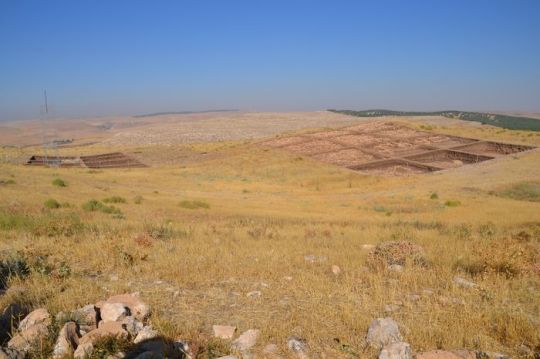
The village of St Nicholas
Six kilometres along the coast is the village of St Nicholas where the coast slopes down to Taouk Liman (The Bay of Birds), for harpoon-hunting. There is the Roussalka camp site.
Southwest of Roussalka is the village of Bulgarevo, and six kilometres further southeast Cape Kaliakra {Beautiful Cape) nses 60-70 metres above the sea, with reddish rock layers of particular beauty.
Kaliakra’s original name was Tirisis, meaning a Thracian settlement. According to ancient literary sources Lizimah hid his treasures in the caves of Tirizis. The Roman fortress on the Cape known by the name of Tetrasiada was incorporated into the province of Skitiya. During the Eastern Roman Empire the fortress was called Acrecastelum and in the Middle Ages it became Kaliakra. With the settlement of the Bulgarians in these parts the fortress became part of the Bulgarian lands. At the end of the 14th century despot Dobrotich built a fortress here and called it Kalatserka. On July 31, 1971, near Kaliakra, the Russian Admiral Ushakov defeated a Turkish fleet, and in 1912 the Bulgarian torpedo-boat Druzki sank the Turkish cruiser Hamidie.
Archaeological excavations have uncovered the foundations of fortress walls, dwellings and tombs. In the Middle Ages Kaliakra was surrounded by three defensive fortress walls. One of them was a land fortification. Another was a defensive line about 500 metres in length stretching from east to west blocking access to the Cape. It was erected by Emperor Aurelian in 214-175 sightseeing turkey. The wall has now been partly explored, restored and conserved. Remains from it can be found 1.5 metres above ground. It is supposed to have been 10 metres high and to have had four towers. An early Christian tomb from the 6th century was discovered between the second and the third defensive line. It is rectangular in shape, 2×4 metres and 2.40 metres high.
The third defensive line is 160 metres long and its remains are about three metres high. A Roman bath from the 4th century was discovered behind this wall as well as a church from the Middle Ages.
Cape Kaliakra
Cape Kaliakra has been declared a National Museum. An interesting exhibition showing artefacts found during excavation has been arranged in one of the caves wliile another cave has been converted mto a restaurant.
On the E-87 international highway and along the elevations of the Chirakman tableland there was once an ancient town, Byzone, built on the site of an old Thracian settlement. In the 1st century part of the Chirakruan elevation along with Bizone sank into the sea. In Roman times the town was restored. It was incorporated into the boundaries of the Bulgarian state. After its devastation by the Tartars Kavama, as it is now called, was restored as a strong fortress by the independent boyar Balik and his successors Dobrotitsa and Ivanko.
Kavama today is a rich agricultural area. On the Chirakman elevation are the foundations of several mediaeval churches, and in the south are the foundations of a Roman structure.
Hotels: Dobrotitsa, two stars, with three single rooms, 41 double rooms, four suites, restaurant and information desk; Kavarna Hotel, two stars, with 400 beds; Morska Zvezda (Sea Star ), two stars and the Chaika casino’on the beach.
Along the E-87 highway towards Balchik is a modem medical resort complex featuring a balneosanatorium, a mud cure establishment and a medical clinic. This is Touzla of Balchik spa resort. It is recommended for the treatment of after-effects from infantile paralysis, neuritis, slipped discs, radicolitis and infectious polyarthritis. The Tozlata camp site is nearby.
0 notes
Photo

The village of St Nicholas
Six kilometres along the coast is the village of St Nicholas where the coast slopes down to Taouk Liman (The Bay of Birds), for harpoon-hunting. There is the Roussalka camp site.
Southwest of Roussalka is the village of Bulgarevo, and six kilometres further southeast Cape Kaliakra {Beautiful Cape) nses 60-70 metres above the sea, with reddish rock layers of particular beauty.
Kaliakra’s original name was Tirisis, meaning a Thracian settlement. According to ancient literary sources Lizimah hid his treasures in the caves of Tirizis. The Roman fortress on the Cape known by the name of Tetrasiada was incorporated into the province of Skitiya. During the Eastern Roman Empire the fortress was called Acrecastelum and in the Middle Ages it became Kaliakra. With the settlement of the Bulgarians in these parts the fortress became part of the Bulgarian lands. At the end of the 14th century despot Dobrotich built a fortress here and called it Kalatserka. On July 31, 1971, near Kaliakra, the Russian Admiral Ushakov defeated a Turkish fleet, and in 1912 the Bulgarian torpedo-boat Druzki sank the Turkish cruiser Hamidie.
Archaeological excavations have uncovered the foundations of fortress walls, dwellings and tombs. In the Middle Ages Kaliakra was surrounded by three defensive fortress walls. One of them was a land fortification. Another was a defensive line about 500 metres in length stretching from east to west blocking access to the Cape. It was erected by Emperor Aurelian in 214-175 sightseeing turkey. The wall has now been partly explored, restored and conserved. Remains from it can be found 1.5 metres above ground. It is supposed to have been 10 metres high and to have had four towers. An early Christian tomb from the 6th century was discovered between the second and the third defensive line. It is rectangular in shape, 2×4 metres and 2.40 metres high.
The third defensive line is 160 metres long and its remains are about three metres high. A Roman bath from the 4th century was discovered behind this wall as well as a church from the Middle Ages.
Cape Kaliakra
Cape Kaliakra has been declared a National Museum. An interesting exhibition showing artefacts found during excavation has been arranged in one of the caves wliile another cave has been converted mto a restaurant.
On the E-87 international highway and along the elevations of the Chirakman tableland there was once an ancient town, Byzone, built on the site of an old Thracian settlement. In the 1st century part of the Chirakruan elevation along with Bizone sank into the sea. In Roman times the town was restored. It was incorporated into the boundaries of the Bulgarian state. After its devastation by the Tartars Kavama, as it is now called, was restored as a strong fortress by the independent boyar Balik and his successors Dobrotitsa and Ivanko.
Kavama today is a rich agricultural area. On the Chirakman elevation are the foundations of several mediaeval churches, and in the south are the foundations of a Roman structure.
Hotels: Dobrotitsa, two stars, with three single rooms, 41 double rooms, four suites, restaurant and information desk; Kavarna Hotel, two stars, with 400 beds; Morska Zvezda (Sea Star ), two stars and the Chaika casino’on the beach.
Along the E-87 highway towards Balchik is a modem medical resort complex featuring a balneosanatorium, a mud cure establishment and a medical clinic. This is Touzla of Balchik spa resort. It is recommended for the treatment of after-effects from infantile paralysis, neuritis, slipped discs, radicolitis and infectious polyarthritis. The Tozlata camp site is nearby.
0 notes
Photo
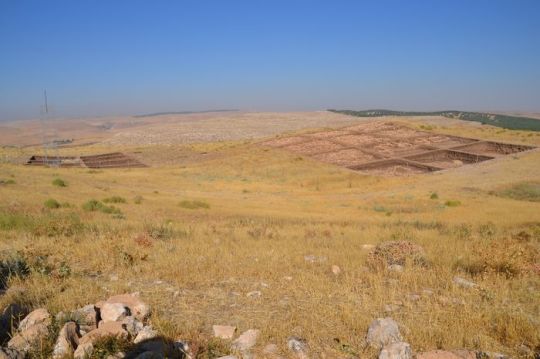
The village of St Nicholas
Six kilometres along the coast is the village of St Nicholas where the coast slopes down to Taouk Liman (The Bay of Birds), for harpoon-hunting. There is the Roussalka camp site.
Southwest of Roussalka is the village of Bulgarevo, and six kilometres further southeast Cape Kaliakra {Beautiful Cape) nses 60-70 metres above the sea, with reddish rock layers of particular beauty.
Kaliakra’s original name was Tirisis, meaning a Thracian settlement. According to ancient literary sources Lizimah hid his treasures in the caves of Tirizis. The Roman fortress on the Cape known by the name of Tetrasiada was incorporated into the province of Skitiya. During the Eastern Roman Empire the fortress was called Acrecastelum and in the Middle Ages it became Kaliakra. With the settlement of the Bulgarians in these parts the fortress became part of the Bulgarian lands. At the end of the 14th century despot Dobrotich built a fortress here and called it Kalatserka. On July 31, 1971, near Kaliakra, the Russian Admiral Ushakov defeated a Turkish fleet, and in 1912 the Bulgarian torpedo-boat Druzki sank the Turkish cruiser Hamidie.
Archaeological excavations have uncovered the foundations of fortress walls, dwellings and tombs. In the Middle Ages Kaliakra was surrounded by three defensive fortress walls. One of them was a land fortification. Another was a defensive line about 500 metres in length stretching from east to west blocking access to the Cape. It was erected by Emperor Aurelian in 214-175 sightseeing turkey. The wall has now been partly explored, restored and conserved. Remains from it can be found 1.5 metres above ground. It is supposed to have been 10 metres high and to have had four towers. An early Christian tomb from the 6th century was discovered between the second and the third defensive line. It is rectangular in shape, 2×4 metres and 2.40 metres high.
The third defensive line is 160 metres long and its remains are about three metres high. A Roman bath from the 4th century was discovered behind this wall as well as a church from the Middle Ages.
Cape Kaliakra
Cape Kaliakra has been declared a National Museum. An interesting exhibition showing artefacts found during excavation has been arranged in one of the caves wliile another cave has been converted mto a restaurant.
On the E-87 international highway and along the elevations of the Chirakman tableland there was once an ancient town, Byzone, built on the site of an old Thracian settlement. In the 1st century part of the Chirakruan elevation along with Bizone sank into the sea. In Roman times the town was restored. It was incorporated into the boundaries of the Bulgarian state. After its devastation by the Tartars Kavama, as it is now called, was restored as a strong fortress by the independent boyar Balik and his successors Dobrotitsa and Ivanko.
Kavama today is a rich agricultural area. On the Chirakman elevation are the foundations of several mediaeval churches, and in the south are the foundations of a Roman structure.
Hotels: Dobrotitsa, two stars, with three single rooms, 41 double rooms, four suites, restaurant and information desk; Kavarna Hotel, two stars, with 400 beds; Morska Zvezda (Sea Star ), two stars and the Chaika casino’on the beach.
Along the E-87 highway towards Balchik is a modem medical resort complex featuring a balneosanatorium, a mud cure establishment and a medical clinic. This is Touzla of Balchik spa resort. It is recommended for the treatment of after-effects from infantile paralysis, neuritis, slipped discs, radicolitis and infectious polyarthritis. The Tozlata camp site is nearby.
0 notes
Photo
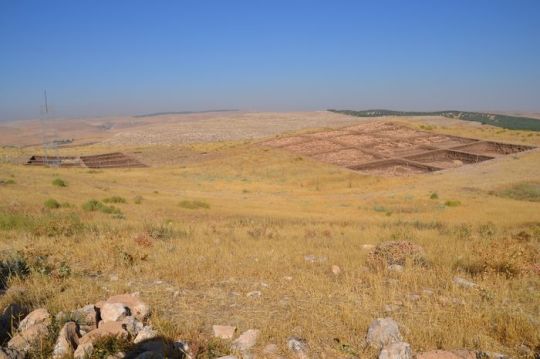
The village of St Nicholas
Six kilometres along the coast is the village of St Nicholas where the coast slopes down to Taouk Liman (The Bay of Birds), for harpoon-hunting. There is the Roussalka camp site.
Southwest of Roussalka is the village of Bulgarevo, and six kilometres further southeast Cape Kaliakra {Beautiful Cape) nses 60-70 metres above the sea, with reddish rock layers of particular beauty.
Kaliakra’s original name was Tirisis, meaning a Thracian settlement. According to ancient literary sources Lizimah hid his treasures in the caves of Tirizis. The Roman fortress on the Cape known by the name of Tetrasiada was incorporated into the province of Skitiya. During the Eastern Roman Empire the fortress was called Acrecastelum and in the Middle Ages it became Kaliakra. With the settlement of the Bulgarians in these parts the fortress became part of the Bulgarian lands. At the end of the 14th century despot Dobrotich built a fortress here and called it Kalatserka. On July 31, 1971, near Kaliakra, the Russian Admiral Ushakov defeated a Turkish fleet, and in 1912 the Bulgarian torpedo-boat Druzki sank the Turkish cruiser Hamidie.
Archaeological excavations have uncovered the foundations of fortress walls, dwellings and tombs. In the Middle Ages Kaliakra was surrounded by three defensive fortress walls. One of them was a land fortification. Another was a defensive line about 500 metres in length stretching from east to west blocking access to the Cape. It was erected by Emperor Aurelian in 214-175 sightseeing turkey. The wall has now been partly explored, restored and conserved. Remains from it can be found 1.5 metres above ground. It is supposed to have been 10 metres high and to have had four towers. An early Christian tomb from the 6th century was discovered between the second and the third defensive line. It is rectangular in shape, 2×4 metres and 2.40 metres high.
The third defensive line is 160 metres long and its remains are about three metres high. A Roman bath from the 4th century was discovered behind this wall as well as a church from the Middle Ages.
Cape Kaliakra
Cape Kaliakra has been declared a National Museum. An interesting exhibition showing artefacts found during excavation has been arranged in one of the caves wliile another cave has been converted mto a restaurant.
On the E-87 international highway and along the elevations of the Chirakman tableland there was once an ancient town, Byzone, built on the site of an old Thracian settlement. In the 1st century part of the Chirakruan elevation along with Bizone sank into the sea. In Roman times the town was restored. It was incorporated into the boundaries of the Bulgarian state. After its devastation by the Tartars Kavama, as it is now called, was restored as a strong fortress by the independent boyar Balik and his successors Dobrotitsa and Ivanko.
Kavama today is a rich agricultural area. On the Chirakman elevation are the foundations of several mediaeval churches, and in the south are the foundations of a Roman structure.
Hotels: Dobrotitsa, two stars, with three single rooms, 41 double rooms, four suites, restaurant and information desk; Kavarna Hotel, two stars, with 400 beds; Morska Zvezda (Sea Star ), two stars and the Chaika casino’on the beach.
Along the E-87 highway towards Balchik is a modem medical resort complex featuring a balneosanatorium, a mud cure establishment and a medical clinic. This is Touzla of Balchik spa resort. It is recommended for the treatment of after-effects from infantile paralysis, neuritis, slipped discs, radicolitis and infectious polyarthritis. The Tozlata camp site is nearby.
0 notes
Photo
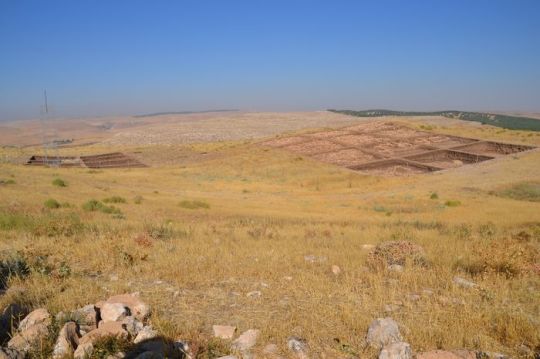
The village of St Nicholas
Six kilometres along the coast is the village of St Nicholas where the coast slopes down to Taouk Liman (The Bay of Birds), for harpoon-hunting. There is the Roussalka camp site.
Southwest of Roussalka is the village of Bulgarevo, and six kilometres further southeast Cape Kaliakra {Beautiful Cape) nses 60-70 metres above the sea, with reddish rock layers of particular beauty.
Kaliakra’s original name was Tirisis, meaning a Thracian settlement. According to ancient literary sources Lizimah hid his treasures in the caves of Tirizis. The Roman fortress on the Cape known by the name of Tetrasiada was incorporated into the province of Skitiya. During the Eastern Roman Empire the fortress was called Acrecastelum and in the Middle Ages it became Kaliakra. With the settlement of the Bulgarians in these parts the fortress became part of the Bulgarian lands. At the end of the 14th century despot Dobrotich built a fortress here and called it Kalatserka. On July 31, 1971, near Kaliakra, the Russian Admiral Ushakov defeated a Turkish fleet, and in 1912 the Bulgarian torpedo-boat Druzki sank the Turkish cruiser Hamidie.
Archaeological excavations have uncovered the foundations of fortress walls, dwellings and tombs. In the Middle Ages Kaliakra was surrounded by three defensive fortress walls. One of them was a land fortification. Another was a defensive line about 500 metres in length stretching from east to west blocking access to the Cape. It was erected by Emperor Aurelian in 214-175 sightseeing turkey. The wall has now been partly explored, restored and conserved. Remains from it can be found 1.5 metres above ground. It is supposed to have been 10 metres high and to have had four towers. An early Christian tomb from the 6th century was discovered between the second and the third defensive line. It is rectangular in shape, 2×4 metres and 2.40 metres high.
The third defensive line is 160 metres long and its remains are about three metres high. A Roman bath from the 4th century was discovered behind this wall as well as a church from the Middle Ages.
Cape Kaliakra
Cape Kaliakra has been declared a National Museum. An interesting exhibition showing artefacts found during excavation has been arranged in one of the caves wliile another cave has been converted mto a restaurant.
On the E-87 international highway and along the elevations of the Chirakman tableland there was once an ancient town, Byzone, built on the site of an old Thracian settlement. In the 1st century part of the Chirakruan elevation along with Bizone sank into the sea. In Roman times the town was restored. It was incorporated into the boundaries of the Bulgarian state. After its devastation by the Tartars Kavama, as it is now called, was restored as a strong fortress by the independent boyar Balik and his successors Dobrotitsa and Ivanko.
Kavama today is a rich agricultural area. On the Chirakman elevation are the foundations of several mediaeval churches, and in the south are the foundations of a Roman structure.
Hotels: Dobrotitsa, two stars, with three single rooms, 41 double rooms, four suites, restaurant and information desk; Kavarna Hotel, two stars, with 400 beds; Morska Zvezda (Sea Star ), two stars and the Chaika casino’on the beach.
Along the E-87 highway towards Balchik is a modem medical resort complex featuring a balneosanatorium, a mud cure establishment and a medical clinic. This is Touzla of Balchik spa resort. It is recommended for the treatment of after-effects from infantile paralysis, neuritis, slipped discs, radicolitis and infectious polyarthritis. The Tozlata camp site is nearby.
0 notes
Photo

The village of St Nicholas
Six kilometres along the coast is the village of St Nicholas where the coast slopes down to Taouk Liman (The Bay of Birds), for harpoon-hunting. There is the Roussalka camp site.
Southwest of Roussalka is the village of Bulgarevo, and six kilometres further southeast Cape Kaliakra {Beautiful Cape) nses 60-70 metres above the sea, with reddish rock layers of particular beauty.
Kaliakra’s original name was Tirisis, meaning a Thracian settlement. According to ancient literary sources Lizimah hid his treasures in the caves of Tirizis. The Roman fortress on the Cape known by the name of Tetrasiada was incorporated into the province of Skitiya. During the Eastern Roman Empire the fortress was called Acrecastelum and in the Middle Ages it became Kaliakra. With the settlement of the Bulgarians in these parts the fortress became part of the Bulgarian lands. At the end of the 14th century despot Dobrotich built a fortress here and called it Kalatserka. On July 31, 1971, near Kaliakra, the Russian Admiral Ushakov defeated a Turkish fleet, and in 1912 the Bulgarian torpedo-boat Druzki sank the Turkish cruiser Hamidie.
Archaeological excavations have uncovered the foundations of fortress walls, dwellings and tombs. In the Middle Ages Kaliakra was surrounded by three defensive fortress walls. One of them was a land fortification. Another was a defensive line about 500 metres in length stretching from east to west blocking access to the Cape. It was erected by Emperor Aurelian in 214-175 sightseeing turkey. The wall has now been partly explored, restored and conserved. Remains from it can be found 1.5 metres above ground. It is supposed to have been 10 metres high and to have had four towers. An early Christian tomb from the 6th century was discovered between the second and the third defensive line. It is rectangular in shape, 2×4 metres and 2.40 metres high.
The third defensive line is 160 metres long and its remains are about three metres high. A Roman bath from the 4th century was discovered behind this wall as well as a church from the Middle Ages.
Cape Kaliakra
Cape Kaliakra has been declared a National Museum. An interesting exhibition showing artefacts found during excavation has been arranged in one of the caves wliile another cave has been converted mto a restaurant.
On the E-87 international highway and along the elevations of the Chirakman tableland there was once an ancient town, Byzone, built on the site of an old Thracian settlement. In the 1st century part of the Chirakruan elevation along with Bizone sank into the sea. In Roman times the town was restored. It was incorporated into the boundaries of the Bulgarian state. After its devastation by the Tartars Kavama, as it is now called, was restored as a strong fortress by the independent boyar Balik and his successors Dobrotitsa and Ivanko.
Kavama today is a rich agricultural area. On the Chirakman elevation are the foundations of several mediaeval churches, and in the south are the foundations of a Roman structure.
Hotels: Dobrotitsa, two stars, with three single rooms, 41 double rooms, four suites, restaurant and information desk; Kavarna Hotel, two stars, with 400 beds; Morska Zvezda (Sea Star ), two stars and the Chaika casino’on the beach.
Along the E-87 highway towards Balchik is a modem medical resort complex featuring a balneosanatorium, a mud cure establishment and a medical clinic. This is Touzla of Balchik spa resort. It is recommended for the treatment of after-effects from infantile paralysis, neuritis, slipped discs, radicolitis and infectious polyarthritis. The Tozlata camp site is nearby.
1 note
·
View note
Photo
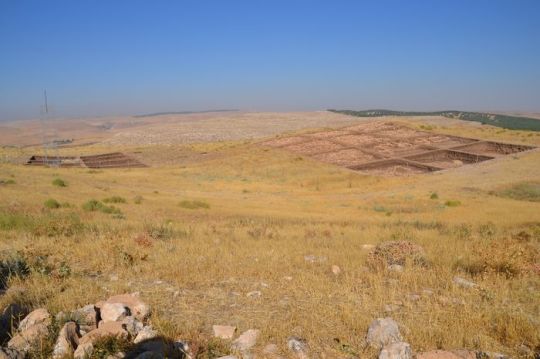
The village of St Nicholas
Six kilometres along the coast is the village of St Nicholas where the coast slopes down to Taouk Liman (The Bay of Birds), for harpoon-hunting. There is the Roussalka camp site.
Southwest of Roussalka is the village of Bulgarevo, and six kilometres further southeast Cape Kaliakra {Beautiful Cape) nses 60-70 metres above the sea, with reddish rock layers of particular beauty.
Kaliakra’s original name was Tirisis, meaning a Thracian settlement. According to ancient literary sources Lizimah hid his treasures in the caves of Tirizis. The Roman fortress on the Cape known by the name of Tetrasiada was incorporated into the province of Skitiya. During the Eastern Roman Empire the fortress was called Acrecastelum and in the Middle Ages it became Kaliakra. With the settlement of the Bulgarians in these parts the fortress became part of the Bulgarian lands. At the end of the 14th century despot Dobrotich built a fortress here and called it Kalatserka. On July 31, 1971, near Kaliakra, the Russian Admiral Ushakov defeated a Turkish fleet, and in 1912 the Bulgarian torpedo-boat Druzki sank the Turkish cruiser Hamidie.
Archaeological excavations have uncovered the foundations of fortress walls, dwellings and tombs. In the Middle Ages Kaliakra was surrounded by three defensive fortress walls. One of them was a land fortification. Another was a defensive line about 500 metres in length stretching from east to west blocking access to the Cape. It was erected by Emperor Aurelian in 214-175 sightseeing turkey. The wall has now been partly explored, restored and conserved. Remains from it can be found 1.5 metres above ground. It is supposed to have been 10 metres high and to have had four towers. An early Christian tomb from the 6th century was discovered between the second and the third defensive line. It is rectangular in shape, 2×4 metres and 2.40 metres high.
The third defensive line is 160 metres long and its remains are about three metres high. A Roman bath from the 4th century was discovered behind this wall as well as a church from the Middle Ages.
Cape Kaliakra
Cape Kaliakra has been declared a National Museum. An interesting exhibition showing artefacts found during excavation has been arranged in one of the caves wliile another cave has been converted mto a restaurant.
On the E-87 international highway and along the elevations of the Chirakman tableland there was once an ancient town, Byzone, built on the site of an old Thracian settlement. In the 1st century part of the Chirakruan elevation along with Bizone sank into the sea. In Roman times the town was restored. It was incorporated into the boundaries of the Bulgarian state. After its devastation by the Tartars Kavama, as it is now called, was restored as a strong fortress by the independent boyar Balik and his successors Dobrotitsa and Ivanko.
Kavama today is a rich agricultural area. On the Chirakman elevation are the foundations of several mediaeval churches, and in the south are the foundations of a Roman structure.
Hotels: Dobrotitsa, two stars, with three single rooms, 41 double rooms, four suites, restaurant and information desk; Kavarna Hotel, two stars, with 400 beds; Morska Zvezda (Sea Star ), two stars and the Chaika casino’on the beach.
Along the E-87 highway towards Balchik is a modem medical resort complex featuring a balneosanatorium, a mud cure establishment and a medical clinic. This is Touzla of Balchik spa resort. It is recommended for the treatment of after-effects from infantile paralysis, neuritis, slipped discs, radicolitis and infectious polyarthritis. The Tozlata camp site is nearby.
0 notes
Photo
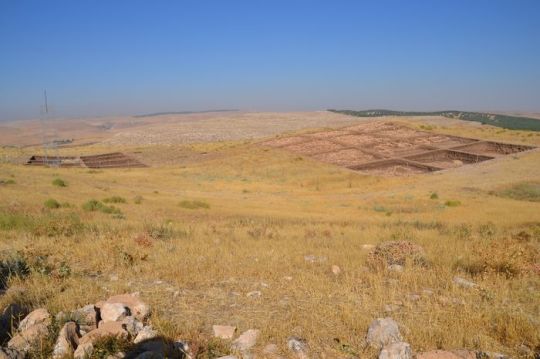
The village of St Nicholas
Six kilometres along the coast is the village of St Nicholas where the coast slopes down to Taouk Liman (The Bay of Birds), for harpoon-hunting. There is the Roussalka camp site.
Southwest of Roussalka is the village of Bulgarevo, and six kilometres further southeast Cape Kaliakra {Beautiful Cape) nses 60-70 metres above the sea, with reddish rock layers of particular beauty.
Kaliakra’s original name was Tirisis, meaning a Thracian settlement. According to ancient literary sources Lizimah hid his treasures in the caves of Tirizis. The Roman fortress on the Cape known by the name of Tetrasiada was incorporated into the province of Skitiya. During the Eastern Roman Empire the fortress was called Acrecastelum and in the Middle Ages it became Kaliakra. With the settlement of the Bulgarians in these parts the fortress became part of the Bulgarian lands. At the end of the 14th century despot Dobrotich built a fortress here and called it Kalatserka. On July 31, 1971, near Kaliakra, the Russian Admiral Ushakov defeated a Turkish fleet, and in 1912 the Bulgarian torpedo-boat Druzki sank the Turkish cruiser Hamidie.
Archaeological excavations have uncovered the foundations of fortress walls, dwellings and tombs. In the Middle Ages Kaliakra was surrounded by three defensive fortress walls. One of them was a land fortification. Another was a defensive line about 500 metres in length stretching from east to west blocking access to the Cape. It was erected by Emperor Aurelian in 214-175 sightseeing turkey. The wall has now been partly explored, restored and conserved. Remains from it can be found 1.5 metres above ground. It is supposed to have been 10 metres high and to have had four towers. An early Christian tomb from the 6th century was discovered between the second and the third defensive line. It is rectangular in shape, 2×4 metres and 2.40 metres high.
The third defensive line is 160 metres long and its remains are about three metres high. A Roman bath from the 4th century was discovered behind this wall as well as a church from the Middle Ages.
Cape Kaliakra
Cape Kaliakra has been declared a National Museum. An interesting exhibition showing artefacts found during excavation has been arranged in one of the caves wliile another cave has been converted mto a restaurant.
On the E-87 international highway and along the elevations of the Chirakman tableland there was once an ancient town, Byzone, built on the site of an old Thracian settlement. In the 1st century part of the Chirakruan elevation along with Bizone sank into the sea. In Roman times the town was restored. It was incorporated into the boundaries of the Bulgarian state. After its devastation by the Tartars Kavama, as it is now called, was restored as a strong fortress by the independent boyar Balik and his successors Dobrotitsa and Ivanko.
Kavama today is a rich agricultural area. On the Chirakman elevation are the foundations of several mediaeval churches, and in the south are the foundations of a Roman structure.
Hotels: Dobrotitsa, two stars, with three single rooms, 41 double rooms, four suites, restaurant and information desk; Kavarna Hotel, two stars, with 400 beds; Morska Zvezda (Sea Star ), two stars and the Chaika casino’on the beach.
Along the E-87 highway towards Balchik is a modem medical resort complex featuring a balneosanatorium, a mud cure establishment and a medical clinic. This is Touzla of Balchik spa resort. It is recommended for the treatment of after-effects from infantile paralysis, neuritis, slipped discs, radicolitis and infectious polyarthritis. The Tozlata camp site is nearby.
0 notes
Photo
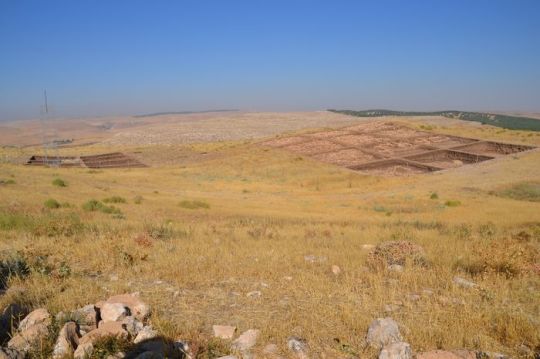
The village of St Nicholas
Six kilometres along the coast is the village of St Nicholas where the coast slopes down to Taouk Liman (The Bay of Birds), for harpoon-hunting. There is the Roussalka camp site.
Southwest of Roussalka is the village of Bulgarevo, and six kilometres further southeast Cape Kaliakra {Beautiful Cape) nses 60-70 metres above the sea, with reddish rock layers of particular beauty.
Kaliakra’s original name was Tirisis, meaning a Thracian settlement. According to ancient literary sources Lizimah hid his treasures in the caves of Tirizis. The Roman fortress on the Cape known by the name of Tetrasiada was incorporated into the province of Skitiya. During the Eastern Roman Empire the fortress was called Acrecastelum and in the Middle Ages it became Kaliakra. With the settlement of the Bulgarians in these parts the fortress became part of the Bulgarian lands. At the end of the 14th century despot Dobrotich built a fortress here and called it Kalatserka. On July 31, 1971, near Kaliakra, the Russian Admiral Ushakov defeated a Turkish fleet, and in 1912 the Bulgarian torpedo-boat Druzki sank the Turkish cruiser Hamidie.
Archaeological excavations have uncovered the foundations of fortress walls, dwellings and tombs. In the Middle Ages Kaliakra was surrounded by three defensive fortress walls. One of them was a land fortification. Another was a defensive line about 500 metres in length stretching from east to west blocking access to the Cape. It was erected by Emperor Aurelian in 214-175 sightseeing turkey. The wall has now been partly explored, restored and conserved. Remains from it can be found 1.5 metres above ground. It is supposed to have been 10 metres high and to have had four towers. An early Christian tomb from the 6th century was discovered between the second and the third defensive line. It is rectangular in shape, 2×4 metres and 2.40 metres high.
The third defensive line is 160 metres long and its remains are about three metres high. A Roman bath from the 4th century was discovered behind this wall as well as a church from the Middle Ages.
Cape Kaliakra
Cape Kaliakra has been declared a National Museum. An interesting exhibition showing artefacts found during excavation has been arranged in one of the caves wliile another cave has been converted mto a restaurant.
On the E-87 international highway and along the elevations of the Chirakman tableland there was once an ancient town, Byzone, built on the site of an old Thracian settlement. In the 1st century part of the Chirakruan elevation along with Bizone sank into the sea. In Roman times the town was restored. It was incorporated into the boundaries of the Bulgarian state. After its devastation by the Tartars Kavama, as it is now called, was restored as a strong fortress by the independent boyar Balik and his successors Dobrotitsa and Ivanko.
Kavama today is a rich agricultural area. On the Chirakman elevation are the foundations of several mediaeval churches, and in the south are the foundations of a Roman structure.
Hotels: Dobrotitsa, two stars, with three single rooms, 41 double rooms, four suites, restaurant and information desk; Kavarna Hotel, two stars, with 400 beds; Morska Zvezda (Sea Star ), two stars and the Chaika casino’on the beach.
Along the E-87 highway towards Balchik is a modem medical resort complex featuring a balneosanatorium, a mud cure establishment and a medical clinic. This is Touzla of Balchik spa resort. It is recommended for the treatment of after-effects from infantile paralysis, neuritis, slipped discs, radicolitis and infectious polyarthritis. The Tozlata camp site is nearby.
0 notes
Text
New Post has been published on
The village of St Nicholas
Six kilometres along the coast is the village of St Nicholas where the coast slopes down to Taouk Liman (The Bay of Birds), for harpoon-hunting. There is the Roussalka camp site.
Southwest of Roussalka is the village of Bulgarevo, and six kilometres further southeast Cape Kaliakra {Beautiful Cape) nses 60-70 metres above the sea, with reddish rock layers of particular beauty.
Kaliakra’s original name was Tirisis, meaning a Thracian settlement. According to ancient literary sources Lizimah hid his treasures in the caves of Tirizis. The Roman fortress on the Cape known by the name of Tetrasiada was incorporated into the province of Skitiya. During the Eastern Roman Empire the fortress was called Acrecastelum and in the Middle Ages it became Kaliakra. With the settlement of the Bulgarians in these parts the fortress became part of the Bulgarian lands. At the end of the 14th century despot Dobrotich built a fortress here and called it Kalatserka. On July 31, 1971, near Kaliakra, the Russian Admiral Ushakov defeated a Turkish fleet, and in 1912 the Bulgarian torpedo-boat Druzki sank the Turkish cruiser Hamidie.
Archaeological excavations have uncovered the foundations of fortress walls, dwellings and tombs. In the Middle Ages Kaliakra was surrounded by three defensive fortress walls. One of them was a land fortification. Another was a defensive line about 500 metres in length stretching from east to west blocking access to the Cape. It was erected by Emperor Aurelian in 214-175 sightseeing turkey. The wall has now been partly explored, restored and conserved. Remains from it can be found 1.5 metres above ground. It is supposed to have been 10 metres high and to have had four towers. An early Christian tomb from the 6th century was discovered between the second and the third defensive line. It is rectangular in shape, 2×4 metres and 2.40 metres high.
The third defensive line is 160 metres long and its remains are about three metres high. A Roman bath from the 4th century was discovered behind this wall as well as a church from the Middle Ages.
Cape Kaliakra
Cape Kaliakra has been declared a National Museum. An interesting exhibition showing artefacts found during excavation has been arranged in one of the caves wliile another cave has been converted mto a restaurant.
On the E-87 international highway and along the elevations of the Chirakman tableland there was once an ancient town, Byzone, built on the site of an old Thracian settlement. In the 1st century part of the Chirakruan elevation along with Bizone sank into the sea. In Roman times the town was restored. It was incorporated into the boundaries of the Bulgarian state. After its devastation by the Tartars Kavama, as it is now called, was restored as a strong fortress by the independent boyar Balik and his successors Dobrotitsa and Ivanko.
Kavama today is a rich agricultural area. On the Chirakman elevation are the foundations of several mediaeval churches, and in the south are the foundations of a Roman structure.
Hotels: Dobrotitsa, two stars, with three single rooms, 41 double rooms, four suites, restaurant and information desk; Kavarna Hotel, two stars, with 400 beds; Morska Zvezda (Sea Star ), two stars and the Chaika casino’on the beach.
Along the E-87 highway towards Balchik is a modem medical resort complex featuring a balneosanatorium, a mud cure establishment and a medical clinic. This is Touzla of Balchik spa resort. It is recommended for the treatment of after-effects from infantile paralysis, neuritis, slipped discs, radicolitis and infectious polyarthritis. The Tozlata camp site is nearby.
0 notes
Photo
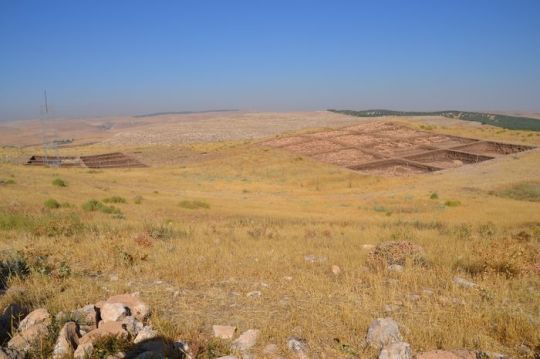
The village of St Nicholas
Six kilometres along the coast is the village of St Nicholas where the coast slopes down to Taouk Liman (The Bay of Birds), for harpoon-hunting. There is the Roussalka camp site.
Southwest of Roussalka is the village of Bulgarevo, and six kilometres further southeast Cape Kaliakra {Beautiful Cape) nses 60-70 metres above the sea, with reddish rock layers of particular beauty.
Kaliakra’s original name was Tirisis, meaning a Thracian settlement. According to ancient literary sources Lizimah hid his treasures in the caves of Tirizis. The Roman fortress on the Cape known by the name of Tetrasiada was incorporated into the province of Skitiya. During the Eastern Roman Empire the fortress was called Acrecastelum and in the Middle Ages it became Kaliakra. With the settlement of the Bulgarians in these parts the fortress became part of the Bulgarian lands. At the end of the 14th century despot Dobrotich built a fortress here and called it Kalatserka. On July 31, 1971, near Kaliakra, the Russian Admiral Ushakov defeated a Turkish fleet, and in 1912 the Bulgarian torpedo-boat Druzki sank the Turkish cruiser Hamidie.
Archaeological excavations have uncovered the foundations of fortress walls, dwellings and tombs. In the Middle Ages Kaliakra was surrounded by three defensive fortress walls. One of them was a land fortification. Another was a defensive line about 500 metres in length stretching from east to west blocking access to the Cape. It was erected by Emperor Aurelian in 214-175 sightseeing turkey. The wall has now been partly explored, restored and conserved. Remains from it can be found 1.5 metres above ground. It is supposed to have been 10 metres high and to have had four towers. An early Christian tomb from the 6th century was discovered between the second and the third defensive line. It is rectangular in shape, 2×4 metres and 2.40 metres high.
The third defensive line is 160 metres long and its remains are about three metres high. A Roman bath from the 4th century was discovered behind this wall as well as a church from the Middle Ages.
Cape Kaliakra
Cape Kaliakra has been declared a National Museum. An interesting exhibition showing artefacts found during excavation has been arranged in one of the caves wliile another cave has been converted mto a restaurant.
On the E-87 international highway and along the elevations of the Chirakman tableland there was once an ancient town, Byzone, built on the site of an old Thracian settlement. In the 1st century part of the Chirakruan elevation along with Bizone sank into the sea. In Roman times the town was restored. It was incorporated into the boundaries of the Bulgarian state. After its devastation by the Tartars Kavama, as it is now called, was restored as a strong fortress by the independent boyar Balik and his successors Dobrotitsa and Ivanko.
Kavama today is a rich agricultural area. On the Chirakman elevation are the foundations of several mediaeval churches, and in the south are the foundations of a Roman structure.
Hotels: Dobrotitsa, two stars, with three single rooms, 41 double rooms, four suites, restaurant and information desk; Kavarna Hotel, two stars, with 400 beds; Morska Zvezda (Sea Star ), two stars and the Chaika casino’on the beach.
Along the E-87 highway towards Balchik is a modem medical resort complex featuring a balneosanatorium, a mud cure establishment and a medical clinic. This is Touzla of Balchik spa resort. It is recommended for the treatment of after-effects from infantile paralysis, neuritis, slipped discs, radicolitis and infectious polyarthritis. The Tozlata camp site is nearby.
0 notes
Photo

The village of St Nicholas
Six kilometres along the coast is the village of St Nicholas where the coast slopes down to Taouk Liman (The Bay of Birds), for harpoon-hunting. There is the Roussalka camp site.
Southwest of Roussalka is the village of Bulgarevo, and six kilometres further southeast Cape Kaliakra {Beautiful Cape) nses 60-70 metres above the sea, with reddish rock layers of particular beauty.
Kaliakra’s original name was Tirisis, meaning a Thracian settlement. According to ancient literary sources Lizimah hid his treasures in the caves of Tirizis. The Roman fortress on the Cape known by the name of Tetrasiada was incorporated into the province of Skitiya. During the Eastern Roman Empire the fortress was called Acrecastelum and in the Middle Ages it became Kaliakra. With the settlement of the Bulgarians in these parts the fortress became part of the Bulgarian lands. At the end of the 14th century despot Dobrotich built a fortress here and called it Kalatserka. On July 31, 1971, near Kaliakra, the Russian Admiral Ushakov defeated a Turkish fleet, and in 1912 the Bulgarian torpedo-boat Druzki sank the Turkish cruiser Hamidie.
Archaeological excavations have uncovered the foundations of fortress walls, dwellings and tombs. In the Middle Ages Kaliakra was surrounded by three defensive fortress walls. One of them was a land fortification. Another was a defensive line about 500 metres in length stretching from east to west blocking access to the Cape. It was erected by Emperor Aurelian in 214-175 sightseeing turkey. The wall has now been partly explored, restored and conserved. Remains from it can be found 1.5 metres above ground. It is supposed to have been 10 metres high and to have had four towers. An early Christian tomb from the 6th century was discovered between the second and the third defensive line. It is rectangular in shape, 2×4 metres and 2.40 metres high.
The third defensive line is 160 metres long and its remains are about three metres high. A Roman bath from the 4th century was discovered behind this wall as well as a church from the Middle Ages.
Cape Kaliakra
Cape Kaliakra has been declared a National Museum. An interesting exhibition showing artefacts found during excavation has been arranged in one of the caves wliile another cave has been converted mto a restaurant.
On the E-87 international highway and along the elevations of the Chirakman tableland there was once an ancient town, Byzone, built on the site of an old Thracian settlement. In the 1st century part of the Chirakruan elevation along with Bizone sank into the sea. In Roman times the town was restored. It was incorporated into the boundaries of the Bulgarian state. After its devastation by the Tartars Kavama, as it is now called, was restored as a strong fortress by the independent boyar Balik and his successors Dobrotitsa and Ivanko.
Kavama today is a rich agricultural area. On the Chirakman elevation are the foundations of several mediaeval churches, and in the south are the foundations of a Roman structure.
Hotels: Dobrotitsa, two stars, with three single rooms, 41 double rooms, four suites, restaurant and information desk; Kavarna Hotel, two stars, with 400 beds; Morska Zvezda (Sea Star ), two stars and the Chaika casino’on the beach.
Along the E-87 highway towards Balchik is a modem medical resort complex featuring a balneosanatorium, a mud cure establishment and a medical clinic. This is Touzla of Balchik spa resort. It is recommended for the treatment of after-effects from infantile paralysis, neuritis, slipped discs, radicolitis and infectious polyarthritis. The Tozlata camp site is nearby.
0 notes
Photo
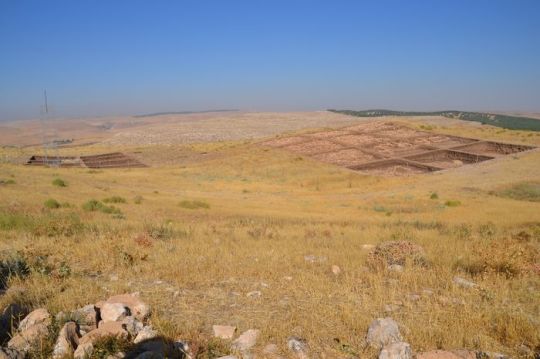
The village of St Nicholas
Six kilometres along the coast is the village of St Nicholas where the coast slopes down to Taouk Liman (The Bay of Birds), for harpoon-hunting. There is the Roussalka camp site.
Southwest of Roussalka is the village of Bulgarevo, and six kilometres further southeast Cape Kaliakra {Beautiful Cape) nses 60-70 metres above the sea, with reddish rock layers of particular beauty.
Kaliakra’s original name was Tirisis, meaning a Thracian settlement. According to ancient literary sources Lizimah hid his treasures in the caves of Tirizis. The Roman fortress on the Cape known by the name of Tetrasiada was incorporated into the province of Skitiya. During the Eastern Roman Empire the fortress was called Acrecastelum and in the Middle Ages it became Kaliakra. With the settlement of the Bulgarians in these parts the fortress became part of the Bulgarian lands. At the end of the 14th century despot Dobrotich built a fortress here and called it Kalatserka. On July 31, 1971, near Kaliakra, the Russian Admiral Ushakov defeated a Turkish fleet, and in 1912 the Bulgarian torpedo-boat Druzki sank the Turkish cruiser Hamidie.
Archaeological excavations have uncovered the foundations of fortress walls, dwellings and tombs. In the Middle Ages Kaliakra was surrounded by three defensive fortress walls. One of them was a land fortification. Another was a defensive line about 500 metres in length stretching from east to west blocking access to the Cape. It was erected by Emperor Aurelian in 214-175 sightseeing turkey. The wall has now been partly explored, restored and conserved. Remains from it can be found 1.5 metres above ground. It is supposed to have been 10 metres high and to have had four towers. An early Christian tomb from the 6th century was discovered between the second and the third defensive line. It is rectangular in shape, 2×4 metres and 2.40 metres high.
The third defensive line is 160 metres long and its remains are about three metres high. A Roman bath from the 4th century was discovered behind this wall as well as a church from the Middle Ages.
Cape Kaliakra
Cape Kaliakra has been declared a National Museum. An interesting exhibition showing artefacts found during excavation has been arranged in one of the caves wliile another cave has been converted mto a restaurant.
On the E-87 international highway and along the elevations of the Chirakman tableland there was once an ancient town, Byzone, built on the site of an old Thracian settlement. In the 1st century part of the Chirakruan elevation along with Bizone sank into the sea. In Roman times the town was restored. It was incorporated into the boundaries of the Bulgarian state. After its devastation by the Tartars Kavama, as it is now called, was restored as a strong fortress by the independent boyar Balik and his successors Dobrotitsa and Ivanko.
Kavama today is a rich agricultural area. On the Chirakman elevation are the foundations of several mediaeval churches, and in the south are the foundations of a Roman structure.
Hotels: Dobrotitsa, two stars, with three single rooms, 41 double rooms, four suites, restaurant and information desk; Kavarna Hotel, two stars, with 400 beds; Morska Zvezda (Sea Star ), two stars and the Chaika casino’on the beach.
Along the E-87 highway towards Balchik is a modem medical resort complex featuring a balneosanatorium, a mud cure establishment and a medical clinic. This is Touzla of Balchik spa resort. It is recommended for the treatment of after-effects from infantile paralysis, neuritis, slipped discs, radicolitis and infectious polyarthritis. The Tozlata camp site is nearby.
0 notes
Photo

The village of St Nicholas
Six kilometres along the coast is the village of St Nicholas where the coast slopes down to Taouk Liman (The Bay of Birds), for harpoon-hunting. There is the Roussalka camp site.
Southwest of Roussalka is the village of Bulgarevo, and six kilometres further southeast Cape Kaliakra {Beautiful Cape) nses 60-70 metres above the sea, with reddish rock layers of particular beauty.
Kaliakra’s original name was Tirisis, meaning a Thracian settlement. According to ancient literary sources Lizimah hid his treasures in the caves of Tirizis. The Roman fortress on the Cape known by the name of Tetrasiada was incorporated into the province of Skitiya. During the Eastern Roman Empire the fortress was called Acrecastelum and in the Middle Ages it became Kaliakra. With the settlement of the Bulgarians in these parts the fortress became part of the Bulgarian lands. At the end of the 14th century despot Dobrotich built a fortress here and called it Kalatserka. On July 31, 1971, near Kaliakra, the Russian Admiral Ushakov defeated a Turkish fleet, and in 1912 the Bulgarian torpedo-boat Druzki sank the Turkish cruiser Hamidie.
Archaeological excavations have uncovered the foundations of fortress walls, dwellings and tombs. In the Middle Ages Kaliakra was surrounded by three defensive fortress walls. One of them was a land fortification. Another was a defensive line about 500 metres in length stretching from east to west blocking access to the Cape. It was erected by Emperor Aurelian in 214-175 sightseeing turkey. The wall has now been partly explored, restored and conserved. Remains from it can be found 1.5 metres above ground. It is supposed to have been 10 metres high and to have had four towers. An early Christian tomb from the 6th century was discovered between the second and the third defensive line. It is rectangular in shape, 2×4 metres and 2.40 metres high.
The third defensive line is 160 metres long and its remains are about three metres high. A Roman bath from the 4th century was discovered behind this wall as well as a church from the Middle Ages.
Cape Kaliakra
Cape Kaliakra has been declared a National Museum. An interesting exhibition showing artefacts found during excavation has been arranged in one of the caves wliile another cave has been converted mto a restaurant.
On the E-87 international highway and along the elevations of the Chirakman tableland there was once an ancient town, Byzone, built on the site of an old Thracian settlement. In the 1st century part of the Chirakruan elevation along with Bizone sank into the sea. In Roman times the town was restored. It was incorporated into the boundaries of the Bulgarian state. After its devastation by the Tartars Kavama, as it is now called, was restored as a strong fortress by the independent boyar Balik and his successors Dobrotitsa and Ivanko.
Kavama today is a rich agricultural area. On the Chirakman elevation are the foundations of several mediaeval churches, and in the south are the foundations of a Roman structure.
Hotels: Dobrotitsa, two stars, with three single rooms, 41 double rooms, four suites, restaurant and information desk; Kavarna Hotel, two stars, with 400 beds; Morska Zvezda (Sea Star ), two stars and the Chaika casino’on the beach.
Along the E-87 highway towards Balchik is a modem medical resort complex featuring a balneosanatorium, a mud cure establishment and a medical clinic. This is Touzla of Balchik spa resort. It is recommended for the treatment of after-effects from infantile paralysis, neuritis, slipped discs, radicolitis and infectious polyarthritis. The Tozlata camp site is nearby.
0 notes
Photo
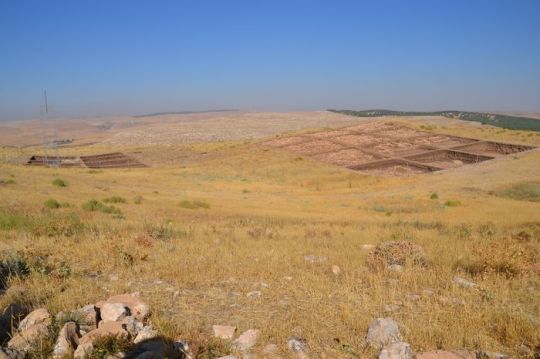
The village of St Nicholas
Six kilometres along the coast is the village of St Nicholas where the coast slopes down to Taouk Liman (The Bay of Birds), for harpoon-hunting. There is the Roussalka camp site.
Southwest of Roussalka is the village of Bulgarevo, and six kilometres further southeast Cape Kaliakra {Beautiful Cape) nses 60-70 metres above the sea, with reddish rock layers of particular beauty.
Kaliakra’s original name was Tirisis, meaning a Thracian settlement. According to ancient literary sources Lizimah hid his treasures in the caves of Tirizis. The Roman fortress on the Cape known by the name of Tetrasiada was incorporated into the province of Skitiya. During the Eastern Roman Empire the fortress was called Acrecastelum and in the Middle Ages it became Kaliakra. With the settlement of the Bulgarians in these parts the fortress became part of the Bulgarian lands. At the end of the 14th century despot Dobrotich built a fortress here and called it Kalatserka. On July 31, 1971, near Kaliakra, the Russian Admiral Ushakov defeated a Turkish fleet, and in 1912 the Bulgarian torpedo-boat Druzki sank the Turkish cruiser Hamidie.
Archaeological excavations have uncovered the foundations of fortress walls, dwellings and tombs. In the Middle Ages Kaliakra was surrounded by three defensive fortress walls. One of them was a land fortification. Another was a defensive line about 500 metres in length stretching from east to west blocking access to the Cape. It was erected by Emperor Aurelian in 214-175 sightseeing turkey. The wall has now been partly explored, restored and conserved. Remains from it can be found 1.5 metres above ground. It is supposed to have been 10 metres high and to have had four towers. An early Christian tomb from the 6th century was discovered between the second and the third defensive line. It is rectangular in shape, 2×4 metres and 2.40 metres high.
The third defensive line is 160 metres long and its remains are about three metres high. A Roman bath from the 4th century was discovered behind this wall as well as a church from the Middle Ages.
Cape Kaliakra
Cape Kaliakra has been declared a National Museum. An interesting exhibition showing artefacts found during excavation has been arranged in one of the caves wliile another cave has been converted mto a restaurant.
On the E-87 international highway and along the elevations of the Chirakman tableland there was once an ancient town, Byzone, built on the site of an old Thracian settlement. In the 1st century part of the Chirakruan elevation along with Bizone sank into the sea. In Roman times the town was restored. It was incorporated into the boundaries of the Bulgarian state. After its devastation by the Tartars Kavama, as it is now called, was restored as a strong fortress by the independent boyar Balik and his successors Dobrotitsa and Ivanko.
Kavama today is a rich agricultural area. On the Chirakman elevation are the foundations of several mediaeval churches, and in the south are the foundations of a Roman structure.
Hotels: Dobrotitsa, two stars, with three single rooms, 41 double rooms, four suites, restaurant and information desk; Kavarna Hotel, two stars, with 400 beds; Morska Zvezda (Sea Star ), two stars and the Chaika casino’on the beach.
Along the E-87 highway towards Balchik is a modem medical resort complex featuring a balneosanatorium, a mud cure establishment and a medical clinic. This is Touzla of Balchik spa resort. It is recommended for the treatment of after-effects from infantile paralysis, neuritis, slipped discs, radicolitis and infectious polyarthritis. The Tozlata camp site is nearby.
0 notes
Photo
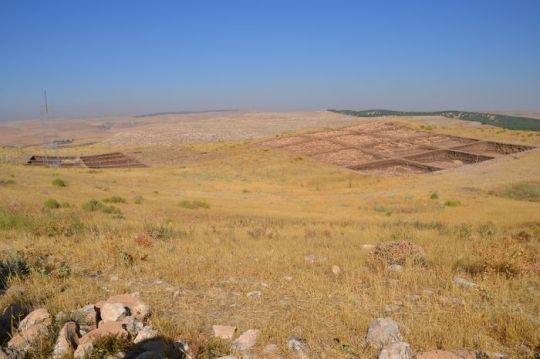
The village of St Nicholas
Six kilometres along the coast is the village of St Nicholas where the coast slopes down to Taouk Liman (The Bay of Birds), for harpoon-hunting. There is the Roussalka camp site.
Southwest of Roussalka is the village of Bulgarevo, and six kilometres further southeast Cape Kaliakra {Beautiful Cape) nses 60-70 metres above the sea, with reddish rock layers of particular beauty.
Kaliakra’s original name was Tirisis, meaning a Thracian settlement. According to ancient literary sources Lizimah hid his treasures in the caves of Tirizis. The Roman fortress on the Cape known by the name of Tetrasiada was incorporated into the province of Skitiya. During the Eastern Roman Empire the fortress was called Acrecastelum and in the Middle Ages it became Kaliakra. With the settlement of the Bulgarians in these parts the fortress became part of the Bulgarian lands. At the end of the 14th century despot Dobrotich built a fortress here and called it Kalatserka. On July 31, 1971, near Kaliakra, the Russian Admiral Ushakov defeated a Turkish fleet, and in 1912 the Bulgarian torpedo-boat Druzki sank the Turkish cruiser Hamidie.
Archaeological excavations have uncovered the foundations of fortress walls, dwellings and tombs. In the Middle Ages Kaliakra was surrounded by three defensive fortress walls. One of them was a land fortification. Another was a defensive line about 500 metres in length stretching from east to west blocking access to the Cape. It was erected by Emperor Aurelian in 214-175 sightseeing turkey. The wall has now been partly explored, restored and conserved. Remains from it can be found 1.5 metres above ground. It is supposed to have been 10 metres high and to have had four towers. An early Christian tomb from the 6th century was discovered between the second and the third defensive line. It is rectangular in shape, 2×4 metres and 2.40 metres high.
The third defensive line is 160 metres long and its remains are about three metres high. A Roman bath from the 4th century was discovered behind this wall as well as a church from the Middle Ages.
Cape Kaliakra
Cape Kaliakra has been declared a National Museum. An interesting exhibition showing artefacts found during excavation has been arranged in one of the caves wliile another cave has been converted mto a restaurant.
On the E-87 international highway and along the elevations of the Chirakman tableland there was once an ancient town, Byzone, built on the site of an old Thracian settlement. In the 1st century part of the Chirakruan elevation along with Bizone sank into the sea. In Roman times the town was restored. It was incorporated into the boundaries of the Bulgarian state. After its devastation by the Tartars Kavama, as it is now called, was restored as a strong fortress by the independent boyar Balik and his successors Dobrotitsa and Ivanko.
Kavama today is a rich agricultural area. On the Chirakman elevation are the foundations of several mediaeval churches, and in the south are the foundations of a Roman structure.
Hotels: Dobrotitsa, two stars, with three single rooms, 41 double rooms, four suites, restaurant and information desk; Kavarna Hotel, two stars, with 400 beds; Morska Zvezda (Sea Star ), two stars and the Chaika casino’on the beach.
Along the E-87 highway towards Balchik is a modem medical resort complex featuring a balneosanatorium, a mud cure establishment and a medical clinic. This is Touzla of Balchik spa resort. It is recommended for the treatment of after-effects from infantile paralysis, neuritis, slipped discs, radicolitis and infectious polyarthritis. The Tozlata camp site is nearby.
0 notes